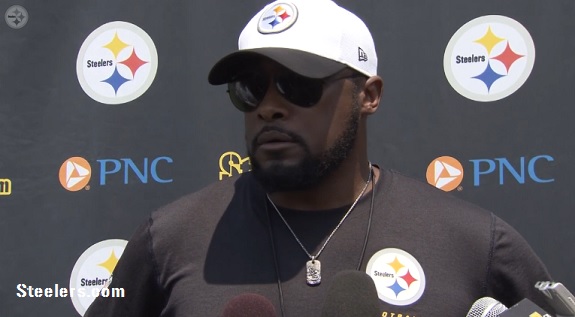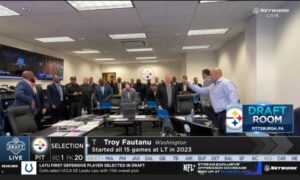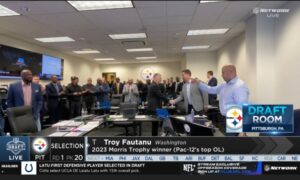It struck me as a bit odd yesterday as I read about Pittsburgh Steelers head coach Mike Tomlin getting his team some early work practicing two-point conversions during the very first OTA session, but the more I thought about it, the more it seemed to make at least some kind of sense.
Now, don’t get me wrong. I don’t believe that Tomlin will be going for two points every time, nor do I think he will do so without due cause, even if he has made some unconventional decisions in the past, i.e. the onside kick late against the Packers in 2009.
But there is some reason to believe that Tomlin should be among the coaches, no matter how more toward the traditional end of the scale he may reside, that are more open to making greater utilization of the two-point try. There are a few reasons, in fact.
The most obvious reason is that he has previously expressed an interest in facilitating the greater use of the two-point conversion when he put forth the suggestion of spotting the ball on the one-yard line. One would think that the coach who suggests making two-point conversions easier might want to attempt some two-point conversions in situations other than when absolutely necessary.
There is also the fact, of course, that he currently has the benefit of a prolific offense with decorated skill position players at quarterback, wide receiver, running back, and tight end, not to mention a growing cast of potential red zone targets.
The Steelers have historically been successful when attempting two-point conversions, successfully converting 10 of their 13 tries under Tomlin. If you extrapolate from that data, the team managed to convert 20 of 26 possible points in those situations, while going for the point after could only at best have yielded 13.
Naturally, that would support the argument that has been proposed that teams on average would be better-served always going for two points than always going for one, because the league-average conversion rate on two-point attempts could be slightly higher than the conversion rate of extra point tries when factoring in the point differential.
A team such as the Steelers that has statistically had a significantly better than average two-point attempt performance (insert your joke about Tomlin saving his two-point plays here) would obviously stand to benefit more from doing so.
There is one other major factor that need be considered, and it’s something that I mentioned in my original article regarding the likely effects of the new PAT rules. Teams such as the Steelers that play in cold-weather environments with heavy exposure to wind and inclement weather should feasibly have a lower conversion rate from 33-yard attempts than teams that play in domes, for example.
I’m sure anybody who’s followed the team for a while can likely recall at least a time or two late in the Autumn and early Winter in Pittsburgh when a 33-yard extra point would have seem a bit more daunting than necessary. It could be on an occasion such as that when a two-point try would make more sense, a factor that a dome team would never have to consider at home.








